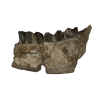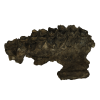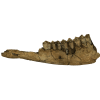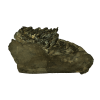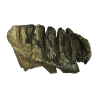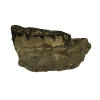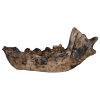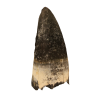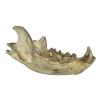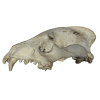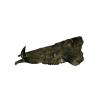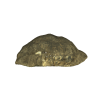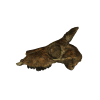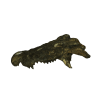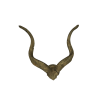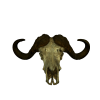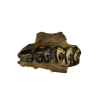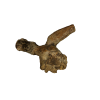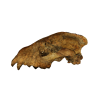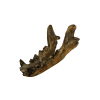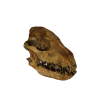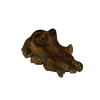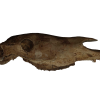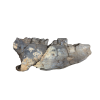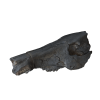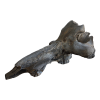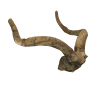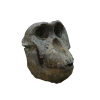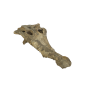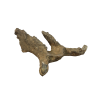This specimen is the upper two tooth rows of an elephant of the genus Elephas. At 3.6 million years it is one of the early forms of Elephas recki (aff. Elephas Recki brumpti). The teeth in wear are probably the 4th or 5th molars.
Elephant teeth are specialized for grinding up large amounts of coarse plant matter and so a single tooth has multiple lamellae which are the enamel ridges which serve as specialized grinding surfaces. As the elephant ages its new teeth move forward into the tooth rows as the older teeth are worn town and break apart at the front of their jaws.
Area 40 is to the north of Ileret and this specimen was found in deposits that lie below the Moiti Tuff (Dated at 3.4 Ma).
Eight distinct elephantid subspecies are recognized from the Plio-Pleistocene sequence east of Lake Turkana, three of these are Loxodoonta: Loxodontaadauroraadaurora, L. adaurorakararae, L. exoptata, and three are Elephas: Elephasreckibrumpti, E. reckishungurensis, E. reckiatavus, E. reckiileretensis, and E. reckirecki.






